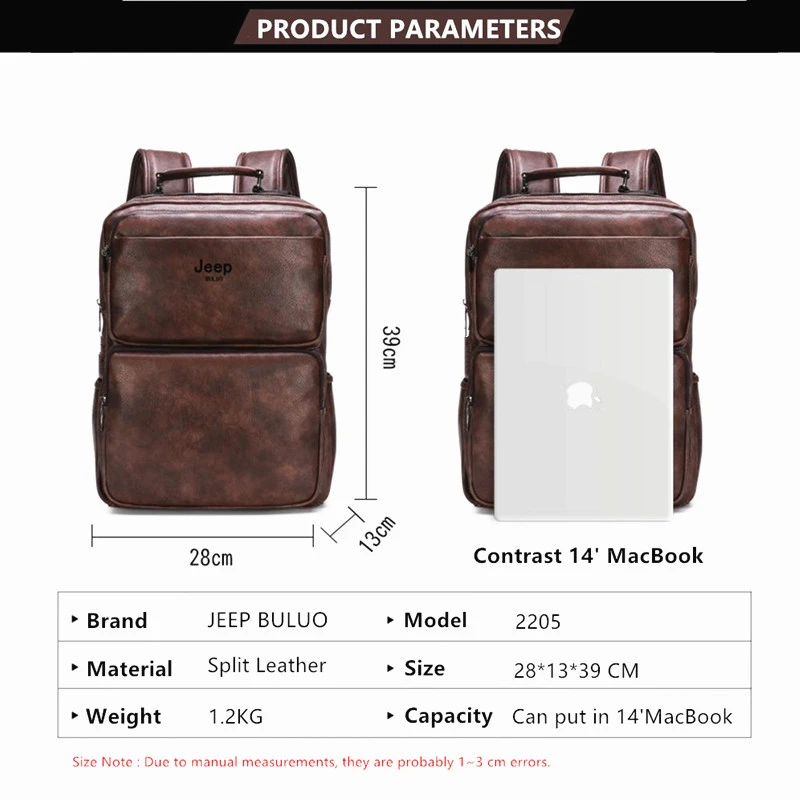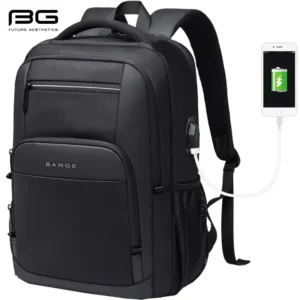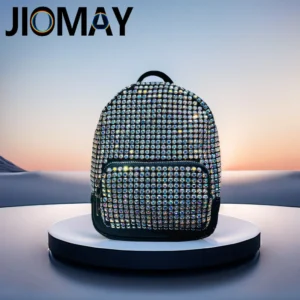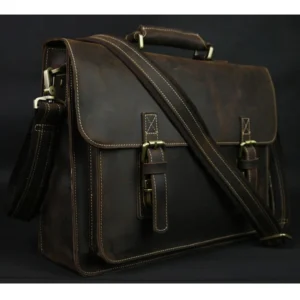Introduction: Understanding Leather Quality Grades
Leather grading represents the standardized way manufacturers categorize their products based on quality, processing methods, and durability. When shopping for leather goods, understanding these grades becomes essential to making wise purchasing decisions that match your needs and budget. Rather than simply looking at appearance or price, knowing the fundamental differences between leather grades helps you assess the true value of what you’re buying.
The four main grades of leather, listed in descending order of quality, are Full-Grain, Top-Grain, Genuine, and Bonded leather. Each grade represents a different level of quality, with corresponding differences in durability, appearance, and cost. The distinction between these grades isn’t merely cosmetic – it directly impacts how long your leather item will last and how it will look over time.
The price differences between grades can be substantial, with full-grain leather items often costing two to three times more than similar products made from lower grades. However, this price difference typically reflects the vastly different lifespans of these products. Higher-grade leathers can last decades with proper care, developing beautiful character over time, while lower grades might deteriorate within just a few years of regular use.
Understanding the differences between top two leather grades provides crucial insight when evaluating premium leather products, especially when investing in quality items like full-grain leather backpacks designed to last for years.
The Definitive Leather Quality Hierarchy
The leather grading system essentially functions as a quality hierarchy, with each grade representing a specific portion of the animal hide and different levels of processing. This classification system helps consumers understand the value proposition of leather goods and make informed decisions based on their needs and budget.
The four primary grades of leather in descending order of quality are:
- Full-Grain Leather – The highest quality, using the outermost layer of the hide with natural features intact
- Top-Grain Leather – High-quality but with some surface processing to remove imperfections
- Genuine Leather – Lower-quality leather from deeper layers of the hide
- Bonded Leather – The lowest quality, made from reconstituted leather scraps
While there isn’t one universally standardized grading system across all tanneries and manufacturers, these four categories are widely recognized throughout the leather industry. Premium leather goods manufacturers typically specify which grade they use in their product descriptions, allowing consumers to make informed comparisons.
Understanding this hierarchy helps explain why certain leather goods command significantly higher prices – the difference isn’t just in the brand name, but in the fundamental quality and longevity of the material itself.
The question of whether full-grain leather makes better backpacks often arises when shopping for luxury leather backpacks, as the grade directly impacts both aesthetics and performance.
Full-Grain Leather: The Premium Standard
Full-grain leather represents the pinnacle of leather quality and sets the standard against which all other grades are measured. This premium material comes from the outermost layer of the hide with its natural grain completely intact – no sanding, buffing, or correcting takes place during processing. Instead of hiding imperfections, full-grain leather embraces the natural markings that tell the story of the animal’s life.
Key characteristics of full-grain leather include:
- Natural markings, visible pores, and unique character that make each piece one-of-a-kind
- Superior tensile strength and durability due to the dense fiber structure of the top layer
- Exceptional breathability that allows the material to regulate temperature and moisture
- Development of a rich patina over time that enhances rather than degrades its appearance
- Water and moisture resistance superior to other grades
- Highest cost, reflecting its quality and longevity
Full-grain leather’s distinctive beauty lies in its imperfections – the natural variations in color, subtle scarring, and visible grain give each piece unique character. Over years of use, full-grain leather develops a patina – a natural luster and darkening that many leather enthusiasts prize. Unlike lower grades that tend to degrade with age, full-grain leather often becomes more attractive as it absorbs oils from handling and develops a rich character unique to its user.
With proper care, full-grain leather products can easily last 20+ years, making them suitable for heirloom-quality items like fine furniture, premium bags, quality boots, and other luxury goods. The higher initial investment pays dividends over time through exceptional durability and timeless appeal.
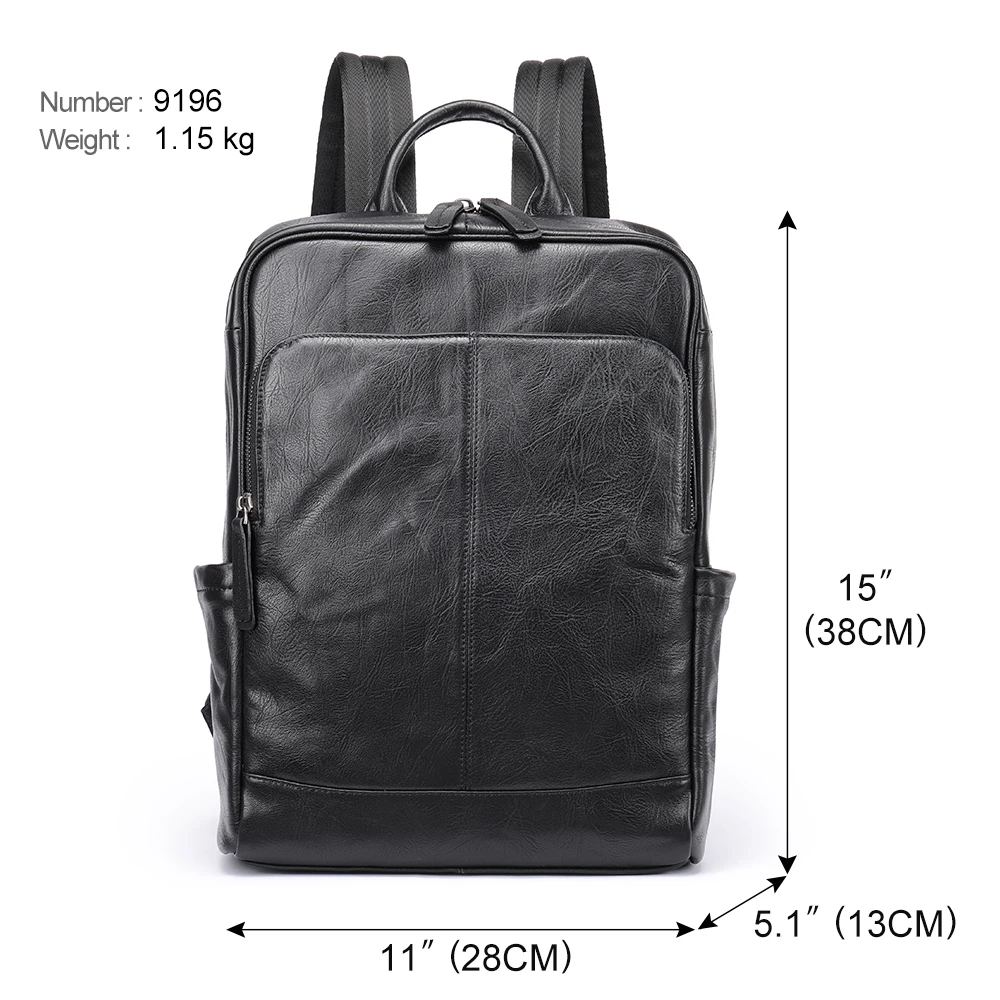
Understanding the art of patina in full-grain leather helps appreciate why many consider investing in premium leather products like men’s leather laptop backpacks worthwhile for their lasting beauty.
Top-Grain Leather: The Refined Choice
Top-grain leather represents the second-highest grade in the quality hierarchy. Like full-grain, it comes from the outermost layer of the hide, but it undergoes additional processing that alters its natural state. The very top layer (the “grain”) is sanded away to remove imperfections like scars, insect bites, and stretch marks, creating a more uniform appearance.
After sanding, top-grain leather typically undergoes additional processing:
- Light buffing to create a consistent surface texture
- Application of pigments to achieve uniform coloration
- Embossing with an artificial grain pattern
- Finishing with sealants for increased stain resistance
These processes result in leather with these distinctive characteristics:
- Smooth, uniform appearance with fewer visible natural markings
- Thinner and more pliable than full-grain, making it easier to work with
- Very good durability, though not quite matching full-grain’s longevity
- Some breathability, though reduced compared to full-grain
- Moderate patina development potential
- More affordable than full-grain while maintaining good quality
Top-grain leather strikes an excellent balance between quality and practicality. Its refinement process removes natural imperfections while preserving much of the material’s durability. This makes it the most common choice for high-end commercial leather goods where a consistent appearance is desired alongside good performance characteristics.
With proper care, top-grain leather products typically last 10-15 years before showing significant wear. You’ll commonly find top-grain leather in quality handbags, jackets, upscale furniture, and other premium leather goods where both appearance and durability matter.
Many consumers find top-grain to be an ideal compromise, offering most of full-grain’s benefits at a more accessible price point. Understanding the disadvantages of full-grain leather can help buyers determine if top-grain might actually be the better choice for certain applications, such as leather laptop backpacks that need to maintain a professional appearance.
Genuine Leather: The Misunderstood Middle Grade
Despite what its name might suggest, “Genuine Leather” isn’t a mark of authenticity or high quality but rather a specific grade in the leather hierarchy. This label often misleads consumers who understandably assume that “genuine” signifies “real” or “authentic” quality leather, when in fact it indicates a lower grade material made from the hide layers remaining after the top portions have been split off for higher-grade products.
Genuine leather comes from the lower splits of the hide and undergoes substantial processing to compensate for its naturally weaker structure:
- Heavy sanding to achieve a uniform surface
- Application of thick dyes and pigments to create consistent coloration
- Artificial graining to mimic the appearance of higher grades
- Chemical treatments to improve durability and appearance
These intensive processes result in several distinctive characteristics:
- Uniform appearance that lacks the natural variations of higher grades
- Stiffer feel that doesn’t soften as gracefully with use
- Lower durability with a tendency to stretch and crack over time
- Limited breathability due to chemical treatments and finishing agents
- Little to no patina development
- Significantly lower cost than full-grain or top-grain
Genuine leather typically lasts about 3-5 years of regular use before showing significant wear. It’s commonly found in mass-market accessories, budget furniture, fashion items, and products where cost constraints outweigh longevity concerns.
The marketing of “Genuine Leather” as a positive attribute rather than a specific grade contributes to consumer confusion. Manufacturers often prominently label products with this term to suggest quality while actually using a relatively basic material. Understanding that 100 percent leather isn’t necessarily full-grain helps consumers see through this common misrepresentation.
For products like vintage leather backpacks, the grade of leather used significantly impacts how well they’ll develop character over time and withstand daily use.
Bonded Leather: Understanding the Composite Grade
Bonded leather represents the lowest grade in the traditional leather classification system. Unlike the other grades which use intact sections of animal hide, bonded leather is a manufactured composite material made from leather scraps and fibers that would otherwise be discarded during the production of higher-grade products.
The manufacturing process of bonded leather involves:
- Shredding and grinding leather scraps into small fibers or dust
- Mixing these leather particles with adhesives and binding agents (typically polyurethane)
- Pressing this mixture onto a paper or fiber backing
- Applying an artificial grain texture and finish to the surface
- Sealing with a protective coating
This construction results in material with these characteristics:
- Uniform, artificial appearance that mimics leather
- Rigid feel that doesn’t develop flexibility or softness with use
- Poor durability with high susceptibility to peeling and cracking
- No breathability due to plastic components and artificial sealing
- Lowest cost of any “leather” product
- Shortest lifespan of any leather grade
The environmental aspects of bonded leather present an interesting paradox. While it does recycle leather scraps that might otherwise be wasted, its short lifespan means these products need replacement far more frequently, potentially creating more waste in the long run than higher-quality items that last decades.
Bonded leather typically lasts just 1-3 years before visible deterioration begins, usually starting with peeling or cracking at stress points. It’s commonly used in budget furniture, bookbinding, fashion accessories, and other products where initial price is the primary consideration.
When evaluating leather alternatives, understanding what eco-leather actually means can help make more informed sustainability choices. For those interested in durable products, exploring the range of leather backpacks made from different grades shows the substantial difference quality materials make.
Beyond the 4 Grades: Understanding Related Leather Types
While the four main grades provide a useful framework for understanding leather quality, the complete picture includes several related classifications that don’t fit neatly into this simplified system. These variations often cross-cut the primary grades, creating subcategories based on specific treatments or finishing methods.
Corrected-grain leather represents an important subcategory, typically considered a variant of top-grain leather. This material undergoes additional sanding to remove deeper imperfections, followed by embossing with an artificial grain pattern. The correction process creates a more uniform appearance but further reduces the natural characteristics of the leather.
Several leather types are defined by their finish rather than their source layer:
- Suede: Created from the underside of the hide with a soft, napped finish
- Nubuck: Top-grain leather that’s been sanded or buffed on the grain side to create a velvety surface
- Aniline leather: Dyed exclusively with soluble dyes without covering the surface with pigment coating
- Semi-aniline: Uses a light protective top coat while still showing natural markings
- Pull-up leather: Treated with oils and waxes that lighten in color when pulled or bent
Tanning methods add another dimension to leather classification:
- Vegetable-tanned: Using natural tannins from plant materials for a traditional, environmentally friendly process
- Chrome-tanned: Using chromium sulfates for faster processing and water resistance
- Combination-tanned: Employing both methods for balanced properties
Understanding these variations helps explain why some leather products don’t seem to fit neatly into the four-grade system. Many premium products strategically combine different leather types based on functional requirements. For instance, a high-quality bag might use full-grain leather for the exterior while utilizing more flexible split leather for interior components.
For those interested in exploring different leather types for durable bags, options like those found in brown leather backpack collections often showcase various treatments and finishes across different quality grades.
Comparative Analysis: How the Leather Grades Stack Up
When comparing leather grades side by side, the differences in quality, performance, and value become clear. The following table provides a comprehensive comparison across key factors that impact consumer choice and satisfaction:
| Feature | Full-Grain | Top-Grain | Genuine Leather | Bonded Leather |
|---|---|---|---|---|
| Source Layer | Outermost layer with natural grain intact | Outer layer with surface sanded | Lower splits after top layers removed | Leather scraps and fibers |
| Durability | Excellent (20+ years) | Very Good (10-15 years) | Fair (3-5 years) | Poor (1-3 years) |
| Patina Development | Rich, distinctive patina | Some patina possible | Minimal to none | None |
| Feel/Texture | Natural, supple with character | Smooth, uniform | Often stiff or artificial | Plastic-like |
| Breathability | Excellent | Good | Limited | None |
| Cost | Highest ($$$) | High ($$) | Moderate ($) | Low ($) |
| Maintenance | Moderate, develops character | Low to moderate | Low | Minimal until failure |
| Common Uses | Luxury goods, heirloom items | Quality commercial products | Mass-market accessories | Budget items |
This comparison highlights the trade-off between initial cost and long-term value. While full-grain leather commands the highest price, its exceptional durability means the cost per year of use is often lower than seemingly “affordable” options that require frequent replacement. Conversely, bonded leather’s low initial price comes with significant limitations in performance and longevity.
For items subject to daily wear and tear, the durability gap between grades becomes particularly significant. A full-grain leather bag might maintain its integrity for decades, while a bonded leather alternative might need replacement after just a year or two of regular use.
When choosing leather quality for bags, this comparative analysis helps consumers align their purchase decisions with their specific needs, budget constraints, and quality expectations.
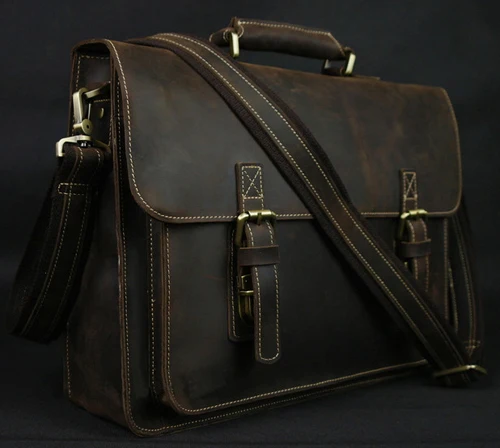
How to Identify Different Leather Grades When Shopping
Identifying leather grades while shopping can be challenging, especially with misleading marketing terminology. These practical techniques will help you accurately assess what you’re really getting:
Examine the edges and cross-sections
Look at unfinished edges where possible. Full-grain and top-grain leather will have a consistent appearance throughout, while bonded leather often shows a layered construction with a thin leather layer on top of a fabric or synthetic backing.Feel the temperature and texture
Real leather feels cool to the touch initially and warms with contact. Higher grades have a supple, natural feel that becomes more pliable with handling. Bonded leather often feels artificially uniform and plastic-like.Look for natural imperfections
Full-grain leather shows natural variations, pores, and subtle markings. Perfectly uniform appearance often indicates heavy processing or artificial materials. Excessive uniformity usually signals lower grades.Observe how it absorbs moisture
The “water drop test” can be revealing: place a small water droplet on an inconspicuous area. Full-grain and top-grain leather will slowly absorb the moisture, while heavily processed or bonded leathers repel it entirely or absorb it very slowly.Notice the scent
Higher-grade leathers have a distinct natural smell. Lower grades often have chemical odors or artificially added “leather scents” to mimic higher quality materials.Check the price
While not definitive, price offers important context. Genuine full-grain leather products are rarely inexpensive due to material costs and typically justify their higher price through superior quality and longevity.Beware of misleading terminology
Terms like “genuine leather” sound positive but actually indicate lower-grade materials. Similarly, “PU leather,” “vegan leather,” or “synthetic leather” aren’t leather at all but plastic alternatives.
Understanding optimal leather thickness for backpacks and examining examples like those in black leather backpack collections can help train your eye to spot quality differences.
Choosing the Right Leather Grade for Your Needs
Selecting the appropriate leather grade involves balancing quality, function, aesthetics, and budget for your specific needs. Consider these guidelines when making your selection:
For everyday items that receive constant handling and wear (wallets, belts, daily-use bags), investing in full-grain or top-grain leather generally makes economic sense over time. These grades withstand daily friction and develop attractive patinas rather than deteriorating. The higher initial cost translates to better value when calculated over the item’s much longer lifespan.
For furniture pieces, the decision depends on your time horizon and usage patterns. Full-grain leather creates heirloom-quality pieces that improve with age, while top-grain offers excellent durability with more uniform appearance. Genuine leather might suffice for less frequently used pieces, but bonded leather should generally be avoided for furniture due to its tendency to peel and crack.
14 Inch Leather Laptop Backpack, Brown Leather Backpack, Men's Leather Backpack, Vintage Leather Backpack
Price range: $177.28 through $199.12 Select options This product has multiple variants. The options may be chosen on the product pageCarry On Leather Backpack, Roll Top Leather Backpack
Price range: $77.76 through $96.48 Select options This product has multiple variants. The options may be chosen on the product pageDesigner Men's Backpack, Men's Leather Laptop Backpack, Men's Leather Work Backpack
Price range: $158.04 through $160.04 Select options This product has multiple variants. The options may be chosen on the product pageDesigner Mini Backpack, Mini Leather Backpack, Small Leather Sling Backpack, Women's Leather Backpack
Price range: $95.76 through $98.80 Select options This product has multiple variants. The options may be chosen on the product pageDesigner Mini Backpack, Designer Women's Backpack, Mini Leather Backpack, Women's Leather Backpack
Price range: $135.92 through $137.64 Select options This product has multiple variants. The options may be chosen on the product page15 Inch Leather Laptop Backpack, Leather Briefcase Backpack
$332.96 Select options This product has multiple variants. The options may be chosen on the product page
For fashion accessories, consider both wear patterns and visual requirements. Items subject to stretching or bending benefit from higher grades, while decorative pieces worn occasionally might allow for compromise on grade without significantly affecting performance.
Budget constraints naturally influence these decisions, but considering the cost-per-use often reveals that higher grades represent better long-term value despite higher initial prices. A $200 full-grain leather bag that lasts 20 years costs $10 per year of use, while a $50 bonded leather bag lasting just 2 years costs $25 per year – more than double the annual cost despite its lower initial price.
For specialized items like backpacks, understanding the quality leather backpacks guide helps match appropriate materials to your carrying needs and style preferences.
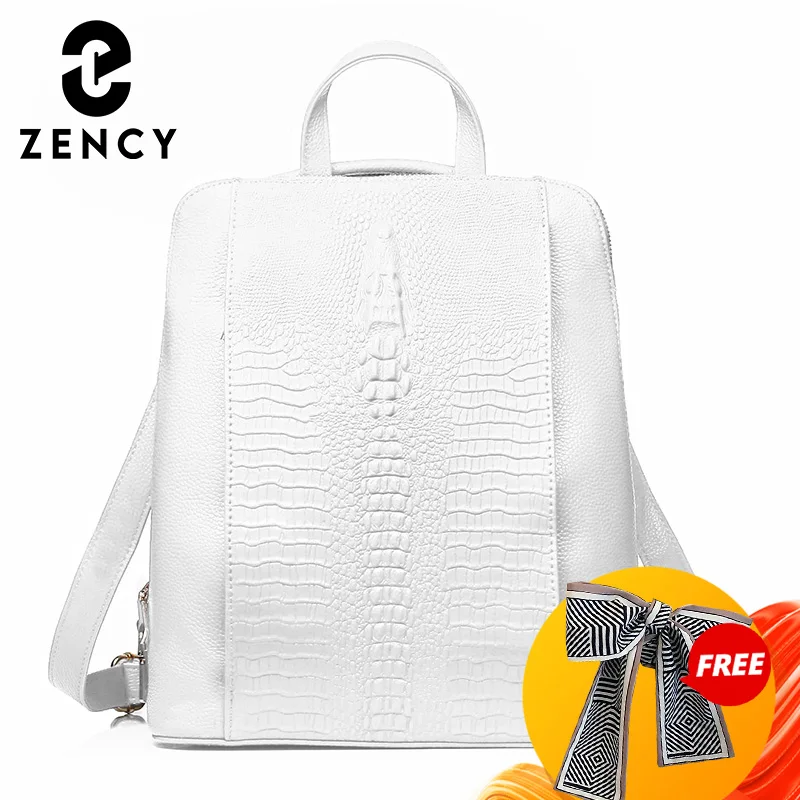
Care Fundamentals: Extending the Life of Any Leather Grade
Proper maintenance significantly extends the lifespan of any leather grade and helps maintain its appearance. While higher grades respond better to conditioning and care, even lower-grade leathers benefit from appropriate maintenance.
Basic care principles for all leather grades include:
- Keep leather items clean by wiping with a slightly damp cloth to remove dust and surface dirt
- Allow wet leather to dry naturally at room temperature, away from direct heat sources
- Store leather items in cool, dry places with good air circulation, using breathable dust covers for long-term storage
- Apply appropriate leather conditioner periodically to prevent drying and cracking
- Avoid prolonged direct sunlight exposure which can cause fading and drying
Grade-specific considerations are important:
- Full-grain and top-grain respond exceptionally well to conditioning and develop richer character over time
- Genuine leather needs more frequent light conditioning to prevent cracking but avoid over-conditioning
- Bonded leather has limited restoration potential – once peeling begins, it generally can’t be repaired
Preventative care makes a substantial difference in leather longevity. Address spills immediately by blotting (never rubbing) with a clean, dry cloth. Use appropriate protectant products on higher-grade leathers to guard against water and staining.
Understanding proper techniques for oiling leather bags can significantly extend the life of quality leather products like leather work backpacks, ensuring your investment continues looking great for years.
Is Leather Grade Always a Perfect Indicator of Quality?
While the four-grade system provides a useful framework for understanding leather quality, it has limitations that savvy consumers should recognize. Leather grade represents just one factor in a product’s overall quality equation.
Craftsmanship and construction quality sometimes outweigh the grade of leather used. A well-designed, expertly constructed bag made from high-quality genuine leather might outlast a poorly made full-grain product. Factors like stitching method, edge finishing, hardware quality, and design all contribute significantly to an item’s durability and functionality.
Regional and terminology variations further complicate leather assessment. Different countries and manufacturers may use varied terms for similar materials, and some luxury brands employ proprietary terminology rather than standard grading language. For instance, Italian leather isn’t a specific grade but refers to country of production, potentially spanning multiple quality levels.
Some premium products intentionally blend different grades for functional reasons. A high-end bag might use full-grain leather for exterior panels where appearance and durability matter most, while utilizing split leather for interior components where flexibility is more important than longevity.
Understanding sustainable practices in leather production provides additional context for evaluating overall quality beyond just the grade classification.
Are Synthetic Leather Alternatives Comparable to Any Traditional Grades?
Modern synthetic alternatives have evolved significantly, creating materials that increasingly mimic traditional leather’s appearance and feel, albeit with fundamental differences in performance and aging characteristics.
Today’s synthetic leathers typically aim to replicate specific traditional grades in appearance and texture:
- Premium synthetics mimic top-grain’s smooth, uniform appearance but lack its breathability and aging characteristics
- Mid-range options approximate genuine leather’s appearance and initial feel
- Budget synthetic materials parallel bonded leather’s initial look but often with superior resistance to peeling
Performance comparisons reveal important distinctions. While synthetic materials offer advantages in water resistance and maintenance simplicity, they fundamentally differ in breathability, temperature response, and aging characteristics. Unlike genuine animal leather that can develop character over time, synthetics typically degrade rather than improve with age.
Environmental considerations add another dimension to this comparison. While synthetic production avoids animal welfare concerns, traditional leather represents a by-product of the meat industry that would otherwise be wasted. Additionally, many synthetic alternatives rely on petroleum-based materials with their own environmental implications.
Newer plant-based alternatives derived from materials like pineapple leaves, mushrooms, and apple peels represent an emerging category that addresses some environmental concerns while offering unique aesthetic and performance properties distinct from both traditional leather and petroleum-based synthetics.
What Common Misrepresentations Should You Watch For When Shopping?
The leather goods market contains numerous misleading practices that can confuse even careful shoppers. Being aware of these common misrepresentations helps you make more informed purchases:
The term “genuine leather” represents perhaps the most widespread confusion. While technically accurate in indicating real leather, this label often disguises lower-quality material. Many consumers incorrectly interpret this as a mark of quality rather than understanding it as a specific (and relatively low) grade.
Ambiguous labeling creates additional confusion. Labels might prominently feature terms like “real leather,” “100% leather,” or “authentic leather” without specifying the actual grade. Similarly, terms like “top quality leather” or “premium leather” have no standardized meaning and often disguise lower-grade materials.
Watch for these warning signs in product descriptions:
- Extremely low prices for supposedly high-quality leather
- Vague terminology without specific grade identification
- Descriptions focusing exclusively on appearance rather than material quality
- Absence of information about the leather source or tanning method
When purchasing leather goods, don’t hesitate to ask specific questions:
* “What specific grade of leather is this?”
* “Which part of the hide is this leather from?”
* “What type of tanning process was used?”
* “Is this the full thickness of the hide or has it been split?”
Retailers selling genuine quality products typically answer these questions confidently and specifically, while those selling lower-quality items often provide vague or evasive responses.
